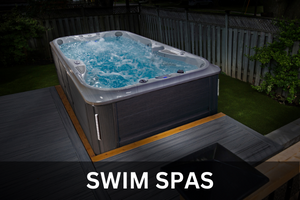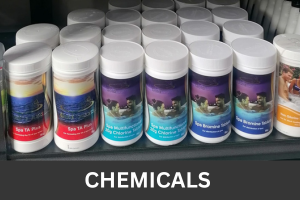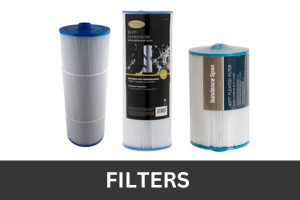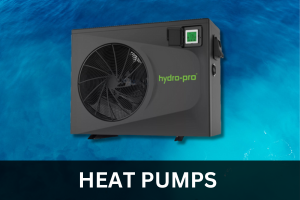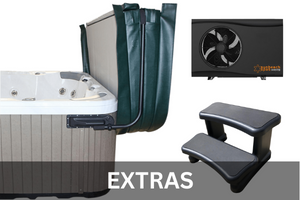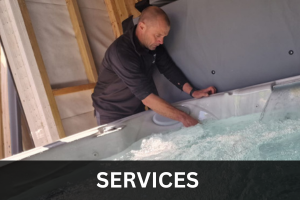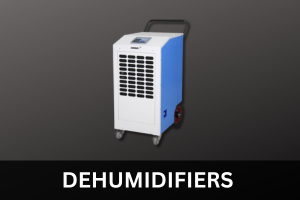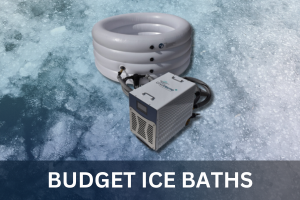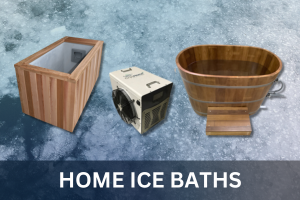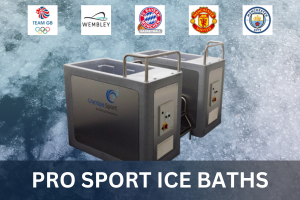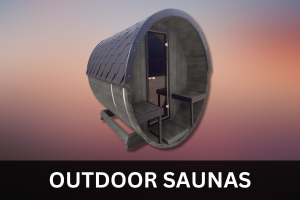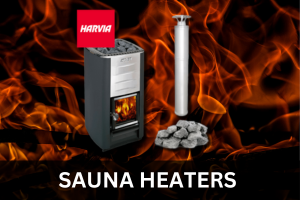Menu
-
- Home
-
Hot Tubs & Swim Spas
-
Chemicals & Filters
-
Services We Offer
- Ice Baths & Saunas
-
Useful Info
-
- 0151 662 0284
- Login

Hot Tubs & Swim Spas
Chemicals & Filters
Services We Offer
Infrared Heaters
Ice Baths & Saunas

Ice Baths and the Benefits of Using them
September 14, 2023 6 min read
For a natural and efficient way to reduce inflammation and pain, cryotherapy and ice baths are worth considering. These age-old cold therapy techniques have been employed for centuries to treat various ailments and still demonstrate numerous advantages. Whether you're an athlete recuperating from intense exercise or an individual dealing with persistent discomfort, cryotherapy and ice baths could provide the relief needed to enhance your health. This blog post explores the scientific principles behind these treatments and their potential to improve your well-being.
The Basics Behind Ice Baths
For centuries, ice baths, a form of cold water therapy, have been utilized as a natural method to diminish inflammation and soothe bodily pain. The process is simple: immerse yourself in cold water for a set period to experience its healing effects.
The water temperature typically spans from 50 to 59 degrees Fahrenheit (10 to 15 degrees Celsius), and the bath usually endures for 10 to 15 minutes. During this period, the cold water prompts the blood vessels to constrict, effectively diminishing inflammation and swelling in the muscles and joints.
Athletes frequently resort to ice baths to hasten their recovery after intense exercise or competitive events. Immersing in cold water helps to numb discomfort and reduce muscle soreness, allowing them to return to their training routines more swiftly.
Beyond merely diminishing inflammation and easing pain, ice baths can significantly boost circulation and hasten recovery. The cold water stimulates blood flow, which helps flush out harmful toxins and deliver vital nutrients to the muscles. This process not only speeds up healing but also enhances athletic performance, showcasing the efficacy of this method.
Overall, ice baths are a simple and effective way to reduce inflammation and pain in the body. Whether you're an athlete or someone dealing with chronic pain, incorporating cold water therapy into your routine can help improve your overall well-being.

The Science Behind Cryotherapy
Cryotherapy, also known as cold therapy, is a relatively new and innovative treatment that harnesses the power of extreme cold to provide a wide range of health benefits. The science behind cryotherapy lies in its ability to activate the body's natural healing processes through exposure to extremely low temperatures.
When the body encounters the cooler environment of a cryotherapy chamber, it undergoes a series of physiological changes. Initially, blood vessels constrict, leading to a decrease in inflammation and swelling, a boon for individuals dealing with chronic pain or ailments like arthritis. Furthermore, the cold stimulates the release of endorphins, the body's natural pain relievers, offering swift and effective relief.
Furthermore, cryotherapy has been shown to increase blood circulation and oxygenation, which can improve recovery time and enhance overall athletic performance. The cold temperatures stimulate the production of collagen, which can improve skin health and reduce the signs of aging. Additionally, cryotherapy has been found to boost metabolism, resulting in increased calorie burn and potential weight loss.
Overall, the science behind cryotherapy is fascinating and continues to be explored. This cold therapy treatment offers a natural and effective way to reduce inflammation, pain, and improve overall well-being.
The Benefits of Cold Therapy
Cold therapy, including both ice baths and cryotherapy, offers a multitude of benefits for your body and overall well-being. One of the key benefits of cold therapy is its ability to reduce inflammation. Cold temperatures cause blood vessels to constrict, which reduces swelling and inflammation in the muscles and joints. This can provide relief for those suffering from conditions such as arthritis or recovering from intense workouts.
In addition to reducing inflammation, cold therapy also helps to alleviate pain. Whether you're dealing with acute muscle soreness or chronic pain, immersing yourself in cold water or exposing your body to extremely low temperatures can help numb the area and provide immediate relief. This can allow you to continue with your daily activities or training without being hindered by pain.
Furthermore, cold therapy improves circulation and promotes faster recovery. The cold temperatures stimulate blood flow, flushing out toxins and delivering essential nutrients to the muscles. This enhanced circulation aids in healing and reduces recovery time, allowing athletes to get back to training sooner and perform at their best.
Lastly, cold therapy has been found to boost metabolism and aid in weight loss. Exposure to cold temperatures increases calorie burn and activates brown fat, which is responsible for burning calories to generate heat. This can lead to increased energy expenditure and potential weight loss.
Overall, the benefits of cold therapy, including ice baths and cryotherapy, are vast and can greatly improve your overall well-being. Whether you're an athlete, dealing with chronic pain, or simply looking to enhance your recovery and feel your best, incorporating cold therapy into your routine can provide remarkable benefits for your body.

Comparing Ice Baths & Cryotherapy
When it comes to cold therapy, there are two popular options to choose from: ice baths and cryotherapy. While both treatments involve exposing the body to cold temperatures, there are some key differences between the two.
Ice baths, also known as cold water therapy, have been used for centuries and are a more traditional form of cold therapy. They involve immersing your body in cold water for a specific duration, typically around 10 to 15 minutes. The cold water helps to constrict blood vessels, reducing inflammation and swelling in the muscles and joints. Ice baths are often favored by athletes for their ability to speed up recovery and reduce muscle soreness.
On the other hand, cryotherapy is a newer and more innovative form of cold therapy. It involves exposing the body to extremely low temperatures, typically in a cryotherapy chamber or tank. Cryotherapy provides a more targeted and intense cold therapy experience, allowing for deeper tissue penetration and potentially more dramatic results. The short exposure to extreme cold stimulates the body's natural healing processes and can provide relief from pain and inflammation.
Both ice baths and cryotherapy have their own unique benefits and can be effective in reducing inflammation and pain. The choice between the two ultimately depends on your personal preference, goals, and accessibility to the treatments. Some may prefer the simplicity and accessibility of ice baths, while others may prefer the more intense and targeted approach of cryotherapy. Either way, incorporating cold therapy into your routine can provide significant relief and improve your overall well-being

Possible Risks & Precautions
When it comes to cryotherapy and ice baths, it's important to be aware of the potential risks and take proper precautions to ensure your safety. While these treatments are generally safe and well-tolerated, there are a few things to consider before diving in.
Firstly, both cryotherapy and ice baths involve exposure to extremely cold temperatures, which can pose a risk of frostbite or skin damage if not properly regulated. It's essential to follow the recommended guidelines for temperature and duration, as prolonged exposure or too low of a temperature can lead to adverse effects.
Additionally, individuals with certain medical conditions should exercise caution when considering cryotherapy or ice baths. Those with cardiovascular problems, Raynaud's disease, or cold hypersensitivity may be more susceptible to negative reactions. It's always a good idea to consult with a healthcare professional before starting any new treatment, especially if you have any underlying health concerns.
Lastly, it's important to listen to your body and be aware of any unusual sensations or discomfort during and after the treatment. If you experience any pain, numbness, dizziness, or difficulty breathing, it's best to discontinue the treatment and seek medical advice.
By being aware of these possible risks and taking the necessary precautions, you can enjoy the benefits of cryotherapy and ice baths safely and effectively. Remember to always prioritize your well-being and consult with a healthcare professional if you have any concerns.

Choosing the Right Cold Therapy for you.
When it comes to choosing the right cold therapy for you, it's important to consider your individual needs and preferences. Both ice baths and cryotherapy offer unique benefits, but which one is best suited for you?
If you prefer a more traditional and accessible approach, ice baths may be the way to go. They are simple to set up and can be done at home with just a tub and some ice. Ice baths are particularly favored by athletes for their ability to reduce muscle soreness and speed up recovery. They are also a great option if you're looking for a more cost-effective solution.
On the other hand, if you're seeking a more intense and targeted treatment, cryotherapy might be the better choice. Cryotherapy chambers or tanks provide a controlled environment with extremely low temperatures, allowing for deeper tissue penetration and potentially more dramatic results. Cryotherapy is often favored by those looking for immediate pain relief or who have specific health concerns they want to address.
Ultimately, the decision between ice baths and cryotherapy comes down to personal preference and accessibility. Consider your goals, budget, and availability when choosing the right cold therapy for you. Whichever option you choose, incorporating cold therapy into your routine can provide remarkable benefits for reducing inflammation and pain, improving your overall well-being.
At Hot Tub Liverpool we understand the importance of both cold water therapy and hot water therapy. That's why we are proud to be selling the range of CET CryoSpa Ice Baths. These ice baths have gained popularity in the world of sports with endorsements from their prestigious clients such as Premier League Football Clubs, Team GB and Wimbledon. With these endorsements, the CET CryoSpa Ice Baths have become the perfect choice for all your cold water therapy needs.
Leave a comment
Subscribe
Sign up to get the latest on sales, new releases and more …



